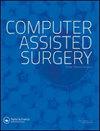定量评估三个供应商的金属伪影减少技术用于CT成像使用定制的幻影
IF 1.9
4区 医学
Q3 SURGERY
引用次数: 5
摘要
将金属植入物放置在丙烯酸体中,以便对来自三家制造商的计算机断层扫描(CT)扫描仪中使用的金属伪影减少技术进行定量分析。将两根钛棒放在一个由丙烯酸制成的圆柱形幻影的凹槽中,然后将凹槽填满水。在腹部CT设置下使用三台CT扫描仪(东芝、GE、西门子)扫描幻体。利用ImageJ测量CT数精度、图像中金属棒的面积、水的影响像元面积的比例。不同的迭代重建、双能量和金属伪影减少技术在三个供应商之间进行了比较。三种扫描仪的最高噪比分别为东芝(Toshiba) 85.7±8.4、GE (GE) 85.9±11.7、西门子(Siemens) 55.0±14.8;最正确的金属面积分别为东芝(Toshiba) 157.1±1.4 mm2、GE (GE) 155.0±1.0 mm2、Siemens (Siemens) 170.6±5.3 mm2。东芝扫描仪单能量金属伪影还原获得的影响像元面积占比为2.2%±0.7%,优于GE扫描仪金属伪影还原软件获得的4.1%±0.7% (p = 0.002)。在所有的定量结果中,受影响像素面积比例的估计与实际图像中金属伪影的减少效果相匹配。因此,东芝扫描仪的单能金属伪影还原技术具有理想的效果。GE扫描仪的金属伪影降低软件有效降低了金属伪影的影响;然而,它低估了金属棒的大小。西门子扫描仪的单能和双能组成技术不能有效地减少金属伪影。本文章由计算机程序翻译,如有差异,请以英文原文为准。
Quantitative assessment of three vendor’s metal artifact reduction techniques for CT imaging using a customized phantom
Abstract A metal implant was placed in an acrylic phantom to enable quantitative analysis of the metal artifact reduction techniques used in computed tomography (CT) scanners from three manufacturers. Two titanium rods were placed in a groove in a cylindrical phantom made by acrylic, after which the groove was filled with water. The phantom was scanned using three CT scanners (Toshiba, GE, Siemens) under the abdomen CT setting. CT number accuracy, contrast-to-noise ratio, area of the metal rods in the images, and fraction of affected pixel area of water were measured using ImageJ. Different iterative reconstruction, dual energy, and metal artifact reduction techniques were compared within three vendors. The highest contrast-to-noise ratio of three scanners were 85.7 ± 8.4 (Toshiba), 85.9 ± 11.7 (GE), and 55.0 ± 14.8 (Siemens); and the most correct results of metal area were 157.1 ± 1.4 mm2 (Toshiba), 155.0 ± 1.0 (GE), and 170.6 ± 5.3 (Siemens). The fraction of affected pixel area obtained using single-energy metal artifact reduction of Toshiba scanner was 2.2% ± 0.7%, which is more favorable than 4.1% ± 0.7% obtained using metal artifact reduction software of GE scanner (p = 0.002). Among all quantitative results, the estimations with fraction of affected pixel areas matched the effect of metal artifact reduction in the actual images. Therefore, the single-energy metal artifact reduction technique of Toshiba scanner had a desirable effect. The metal artifact reduction software of GE scanner effectively reduced the effect of metal artifacts; however, it underestimated the size of the metal rods. The monoenergetic and dual energy composition techniques of Siemens scanner could not effectively reduce metal artifacts.
求助全文
通过发布文献求助,成功后即可免费获取论文全文。
去求助
来源期刊

Computer Assisted Surgery
Medicine-Surgery
CiteScore
2.30
自引率
0.00%
发文量
13
审稿时长
10 weeks
期刊介绍:
omputer Assisted Surgery aims to improve patient care by advancing the utilization of computers during treatment; to evaluate the benefits and risks associated with the integration of advanced digital technologies into surgical practice; to disseminate clinical and basic research relevant to stereotactic surgery, minimal access surgery, endoscopy, and surgical robotics; to encourage interdisciplinary collaboration between engineers and physicians in developing new concepts and applications; to educate clinicians about the principles and techniques of computer assisted surgery and therapeutics; and to serve the international scientific community as a medium for the transfer of new information relating to theory, research, and practice in biomedical imaging and the surgical specialties.
The scope of Computer Assisted Surgery encompasses all fields within surgery, as well as biomedical imaging and instrumentation, and digital technology employed as an adjunct to imaging in diagnosis, therapeutics, and surgery. Topics featured include frameless as well as conventional stereotactic procedures, surgery guided by intraoperative ultrasound or magnetic resonance imaging, image guided focused irradiation, robotic surgery, and any therapeutic interventions performed with the use of digital imaging technology.
 求助内容:
求助内容: 应助结果提醒方式:
应助结果提醒方式:


